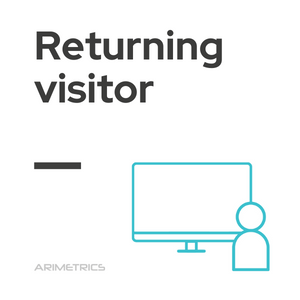 Definition:
Definition:
A returning visitor is a user who visits a website more than once during a specific period of time. In web analytics, a returning visitor is any user who has been identified more than once within the period being analyzed. This metric indicates that the user has accessed the website multiple times, which may reflect a continued interest or loyalty to the site’s content. At Google Analyticsa returning visitor is a user who has already been assigned a Client ID at the time of the visit or session. The Client ID is a unique identifier that is generated during a browser’s first session. If a user deletes cookies or uses a different browser from the previous session, they will be considered a new user, as the Client ID cannot be transferred between browsers or after cookies are deleted.
Recurring visitor in the digital marketing context
Returning visitors are a valuable segment for digital marketing strategies, as their behavior can differ significantly from that of new visitors. While SEO focuses on attracting new traffic through search engines, repeat visitor analysis helps to understand user loyalty and engagement with site content. For new users, the main goal is to build loyalty and convert them into repeat visitors. On the other hand, repeat visitors tend to be more likely to make purchases or conversions. Therefore, it is important to guide them through the purchase funnel with personalized strategies.
Strategies to increase repeat visitors
- Quality and updated content: Offering relevant, valuable and regularly updated content can motivate visitors to return for new information.
- Personalization: Using behavioral data to personalize the user experience, such as product recommendations or content based on past visits, can increase satisfaction and the likelihood of return.
- Loyalty programs: Implementing programs that reward users for their loyalty, such as exclusive discounts or reward points, can encourage repeat visits.
- Newsletters and notifications: Keeping users informed about news and offers through newsletters or push notifications can remind them to return to the site.
Measurement and analysis of repeat visitors
- User segmentation: Dividing users into segments based on their behavior and frequency of visits allows for a more detailed analysis and the implementation of specific strategies for each group.
- Conversion funnel analysis: Evaluating how repeat visitors move through the conversion funnel can identify obstacles and opportunities to improve the user experience.
- Return rate: Measuring the return rate, or the proportion of visitors who return to the site within a specific period, helps to evaluate the effectiveness of retention strategies.
- User feedback: Collecting opinions and comments from repeat users can provide valuable information about their needs and expectations, guiding continuous improvements to the site.
